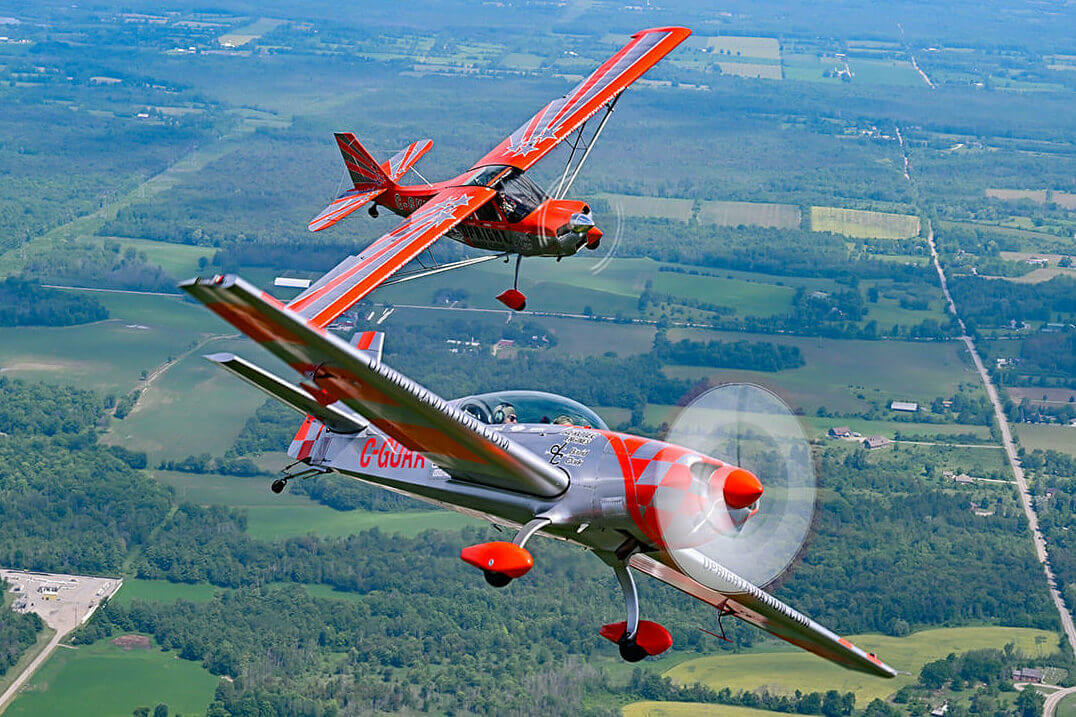Estimated reading time 16 minutes, 58 seconds.
It’s well known in the general aviation (GA) industry that the majority of aircraft accidents are caused by pilot error. Numerous studies have proven this time and again. In fact, the Aircraft Owners and Pilots Association says nearly eight out of 10 GA accidents are pilot-related. Diving in a little deeper, the leading cause of fatal GA accidents is loss of control in flight — and this has been the case for decades, according to the Federal Aviation Administration (FAA).
Aerobatic pilot and flight instructor Geoff Armstrong knew roughly a decade ago that he wanted to be part of the solution to these troubling statistics. Knowing that upset prevention and recovery training (UPRT) can mitigate loss-of-control-in-flight accidents, Armstrong had an idea to combine his passion for aerobatics with his goal to enhance pilot training by opening up a flight school that does UPRT the right way.
Five years ago, that dream came to life when Upright Aviation Academy opened for business at Burlington Airpark (CZBA), nestled at the foot of the Niagara Escarpment, just southwest of Toronto. Today, Upright Aviation Academy is the only flight school in Ontario with dedicated aerobatic training, utilizing Extra 300L and Super Decathlon (8KCAB) aircraft.
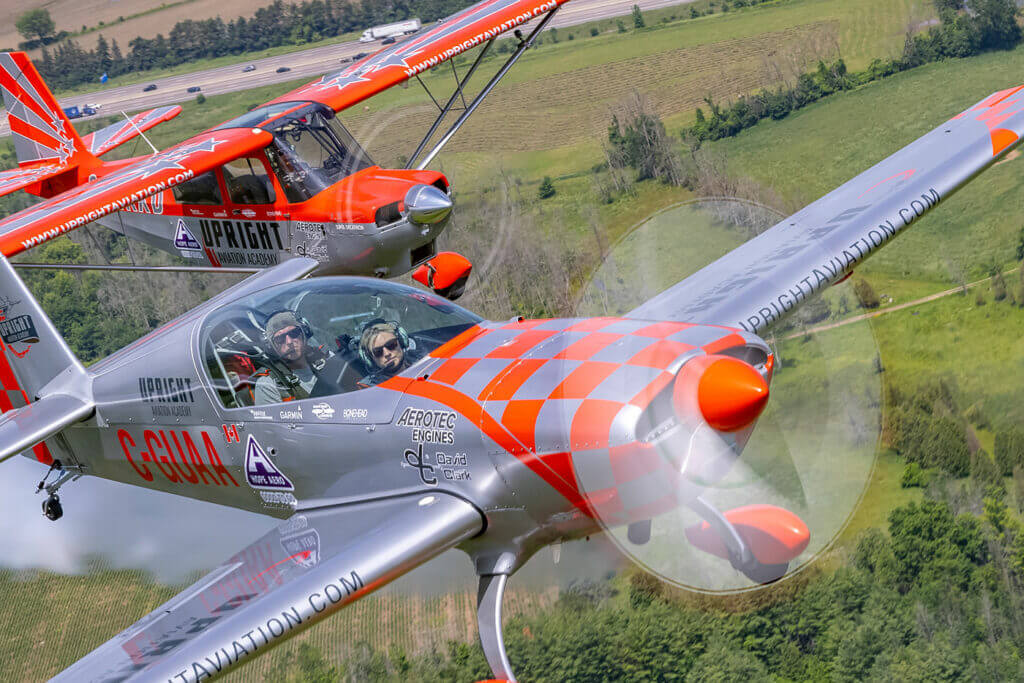
Though, aerobatic flying wasn’t necessarily a straightforward path for the flight school’s founder. Armstrong, who comes from a long line of pilots, was introduced to aerobatics back in his flight instructing days by none other than eight-time Canadian aerobatic champion, Gerry Younger.
“I went up for my first aerobatic flight with the Canadian champion, and we did some training,” said Armstrong. “At the time, I was actually flight instructing at [CZBA].”
Soon after, he went on to work as the chief pilot for a Canadian charter company, flying corporate jets and PC-12s. But once he had gotten a taste of aerobatic flight, he couldn’t let it go. While there weren’t many flight schools offering aerobatics in Canada, he headed to the Golden State where more opportunities awaited.
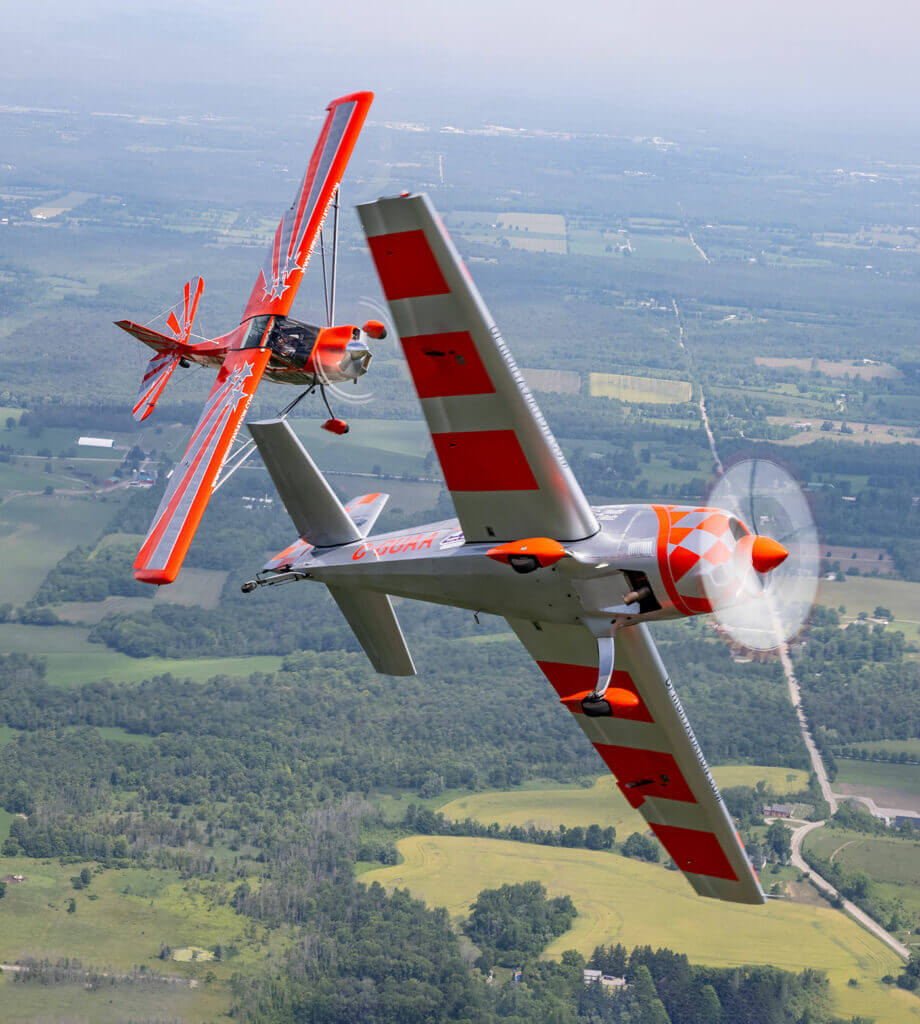
“I went and flew airlines in the U.S. for a couple of years, and I was based out of Chicago and San Diego,” recalled Armstrong. “At the same time, I was learning and working at a large aerobatic ride company that had bases in Las Vegas and San Diego.
“I would be on reserve and write my business plan [for Upright Aviation Academy] in hotels,” he continued. “I happened to meet a guy who was willing to invest in it, and everything happened really quickly.”
Taking Off
Upright Aviation has grown significantly since its early days, despite unique challenges created by the recent pandemic. Armstrong said he was lucky to team up with two incredible aerobatic pilots/instructors right off the hop.
“Trevor Rafferty and Liam Pearson were my first two guys,” he said, “and they’re still with us.”
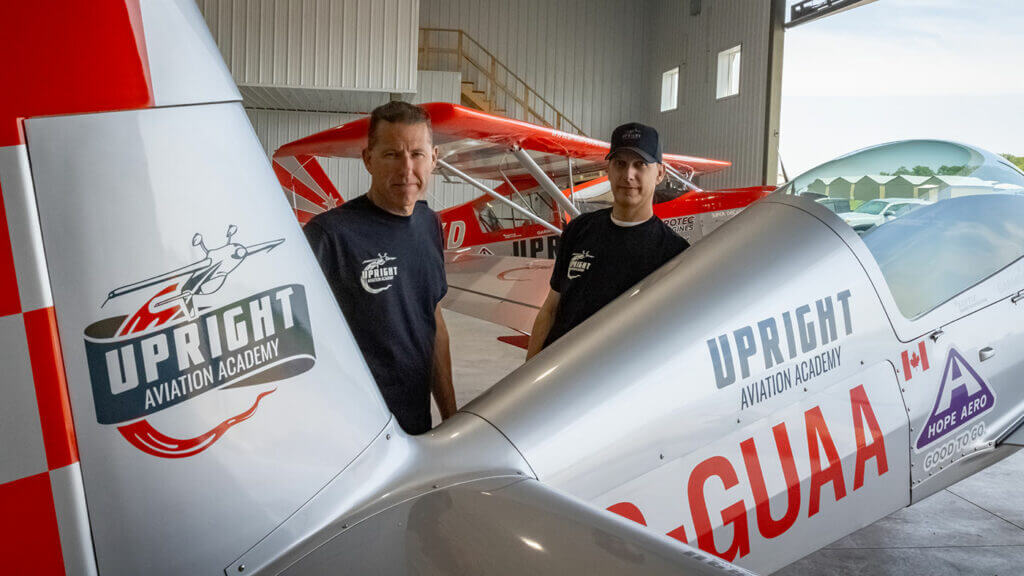
Now, Upright Aviation has a total of seven instructors — three of which are Class 1 instructors, “which is new for us this year,” noted Armstrong. The experience among the team of instructors is vast, ranging from airshow/competition, airline, and medevac pilots, to turboprop, aerial firefighting, and bush pilots. What they share in common is their passion for aerobatic flying and enabling a safer GA community.
The most recent, and game-changing, addition to Upright Aviation is its new 8,000-square-foot facility at CZBA. In the beginning, Armstrong said the flight school was renting small hangars around the airport, and it lacked a proper space for classroom instruction. To now have a permanent, sizeable base has “made a world of a difference,” said Armstrong.
“Not only are we able to store our airplanes, when owners come with their turbine aircraft to take our safety programs or training, we can house them here — sort of like the FBO of the field. . . . Plus, we now have comfortable facilities with a classroom and boardroom, and we have room to grow.”
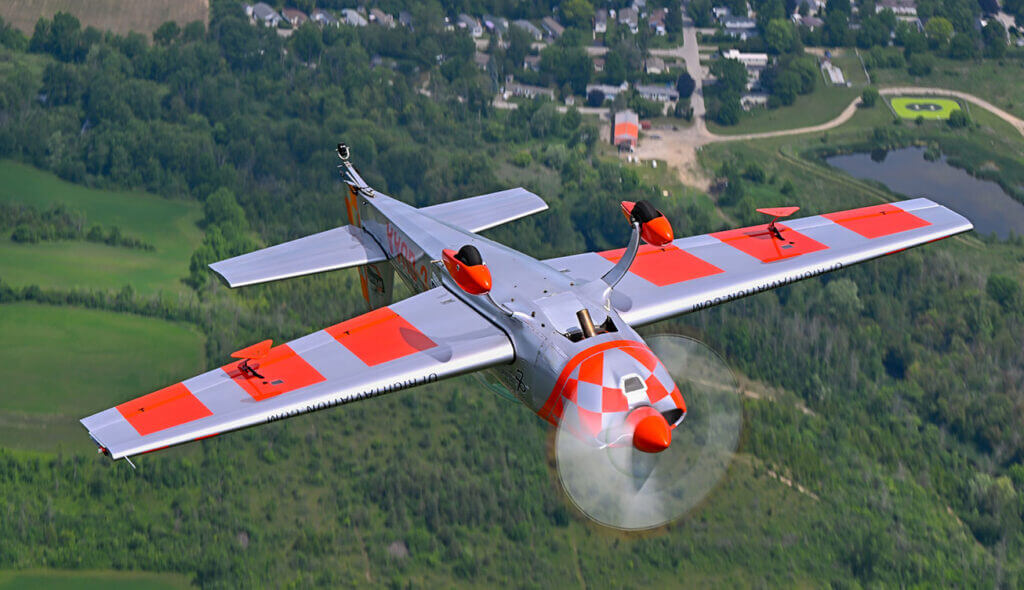
The Bread and Butter
Upright Aviation Academy offers a variety of courses that meet Transport Canada guidelines and standards, including UPRT, emergency maneuver training (EMT), and pilot confidence training (PCT) — which are identified as safety courses — as well as courses geared towards both aerobatic and tailwheel flying. The latter two go hand-in-hand.
“Most aerobatic planes are tailwheel aircraft, so we try to encourage people who come in for aerobatics training to do the tailwheel course as well,” explained Armstrong. “That way, they can take off, go do the lesson, and land themselves, rather than the instructors having to do the takeoff and landing” — which are notoriously tricky to execute in a tailwheel plane.
Chief instructor Rafferty said the goal is to create the best value for students by combining the tailwheel and aerobatics courses as much as possible. For example, every aerobatic flight would involve one tailwheel lesson to allow pilots to develop the skills required to do all the flying from start to finish.
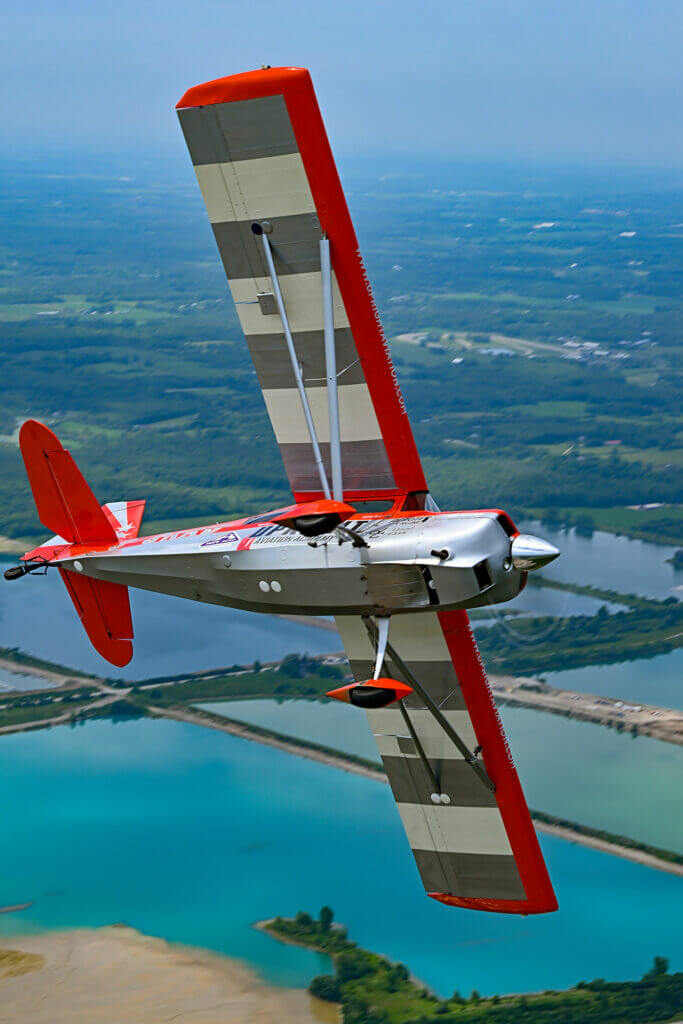
“I try not to fly the airplane,” said Rafferty. “I want [the students] to do it all.”
Aerobatic training can be done in either the Extra 300L or the Super Decathlon, while the latter aircraft is used specifically for tailwheel training. Both courses offer five-hour or 10-hour options and require a private pilot license at minimum.
The tailwheel course is a newer offering at Upright Aviation thanks to Rafferty, who is an avid aircraft builder.
“During the first year of the Covid-19 pandemic, we found a Super Decathlon for a really good price,” shared Armstrong. “Trevor had built around seven airplanes by that time, so we bought the [Super Decathlon], brought it home, and spent the winter tearing it apart and rebuilding it to brand new.
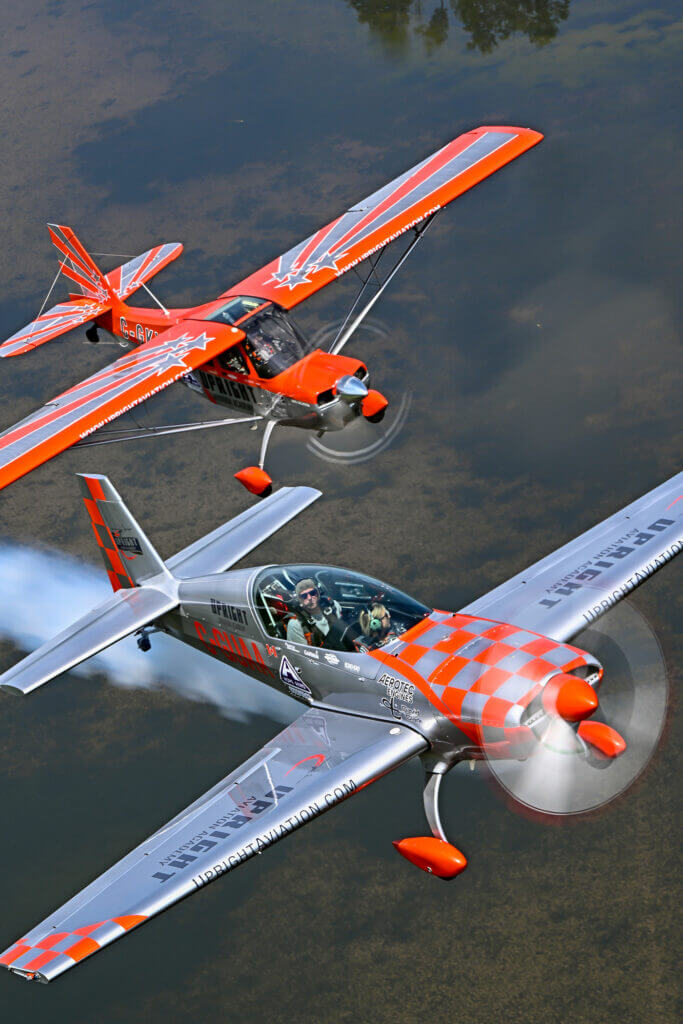
“We got an engine sponsor, Aerotec Engines, and David Clark Company and Hope Aero Propeller sponsored us, too, so we were able to brand the airplane and add tailwheel training — as well as have a backup aircraft to the Extra 300 during busy times.”
The Super Decathlon, powered by the 180-horsepower Lycoming AEIO-360-H1B engine, has a maximum speed (sea level) of 135 knots, load factors of +6/-5 Gs, and a roll rate of roughly 180 degrees per second. The aircraft is capable of flying upside down for two minutes thanks to inverted oil and fuel systems, as well as a semi-symmetrical wing design that improves inverted flight capabilities.
The Super Decathlon serves as the perfect stepping stone to the real show-stopper: the Extra 300L, which Armstrong refers to as the Formula 1 vehicle of aviation. Powered by the six-cylinder, 300-horsepower Lycoming AEIO-540-L1B5 engine, the Extra 300 has incredible load factors of +10/-10 Gs — certified by both Transport Canada and the FAA. In fact, the Extra is the only ‘unlimited’ aerobatic aircraft that is certified to operate commercially.
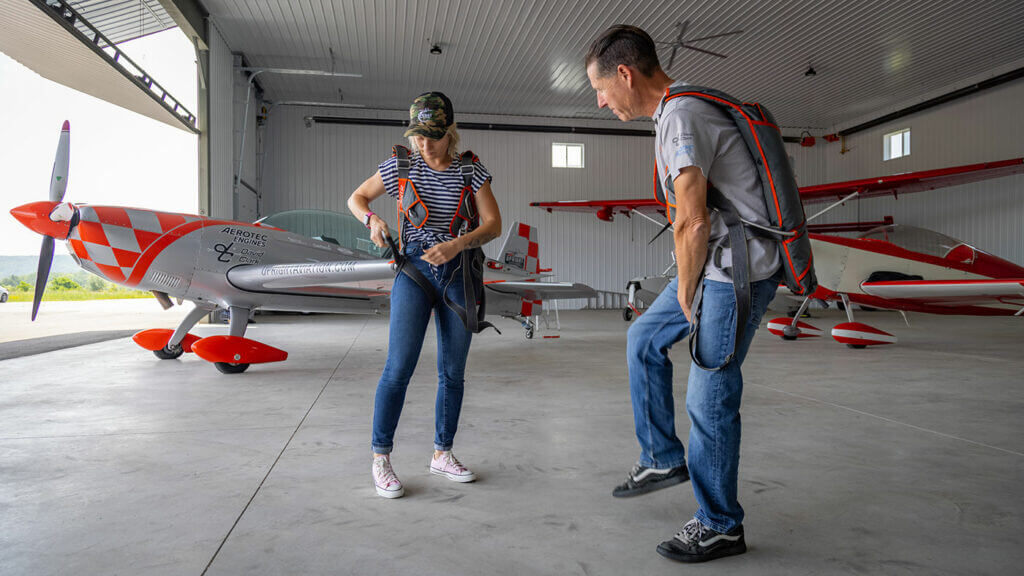
Like the Super Decathlon, the Extra 300L has inverted oil and fuel systems. It can reach a top speed of 220 knots (Vne) and land at 90 to 100 mph (145 to 160 km/h).
Thanks to the Extra’s flight envelope — certified for extreme negative and positive G loads — the aircraft is the most common type used for UPRT around the globe. “We don’t have to worry about ‘breaking’ the airplane,” said Armstrong. “You’ll break the pilot before you break the airplane,” he laughed.
Upright Aviation’s UPRT course takes pilots through a myriad of unusual attitudes and abnormal flight envelope conditions to teach them how to recover from virtually every in-flight upset or flight envelope excursion. The three-day course includes 16 hours of classroom time, where pilots learn about the aerodynamics involved with all flight conditions, as well as four to six flights where they learn recognition, avoidance, and recovery skills.
Armstrong explained that pilots who take the UPRT course are typically used to experiencing roughly 10 percent of the all-attitude envelope; “we take them into the remaining 90 percent of that envelope, and it’s a big eye-opener for them,” he said.
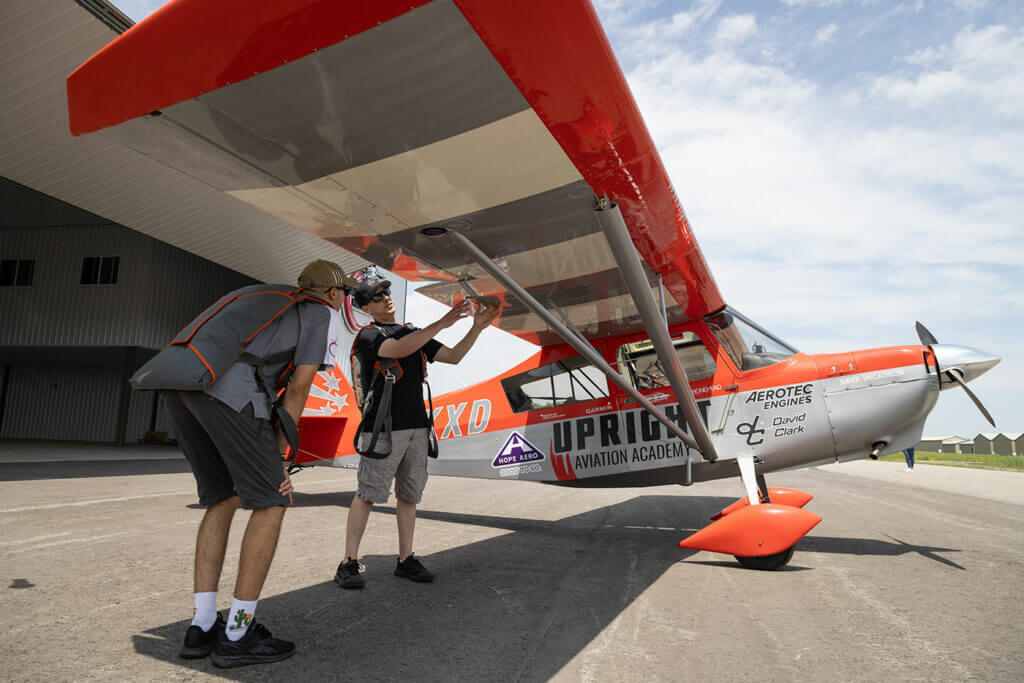
A two-day UPRT renewal course is also available, which includes half the classroom time and two to three flights.
Including the UPRT course, Upright Aviation’s safety courses are the bread and butter of the flight school, noted Armstrong. “We have had three to four contracts per year for our safety courses, in addition to individuals that come in,” he said.
While the summer is Upright Aviation’s busy season, the flight school is open year-round. Armstrong said Upright Aviation was previously a seasonal business, but that changed with the addition of the Super Decathlon, which is equipped with heat. During the 2023 winter season, the flight school installed new equipment on the Extra 300L to allow that aircraft to fly in the winter, too.
As one of only a few flight schools in Canada with dedicated aerobatic training and unmatched safety training, Upright Aviation sees students from all over the country, from the eastern provinces, to Quebec, to British Columbia.
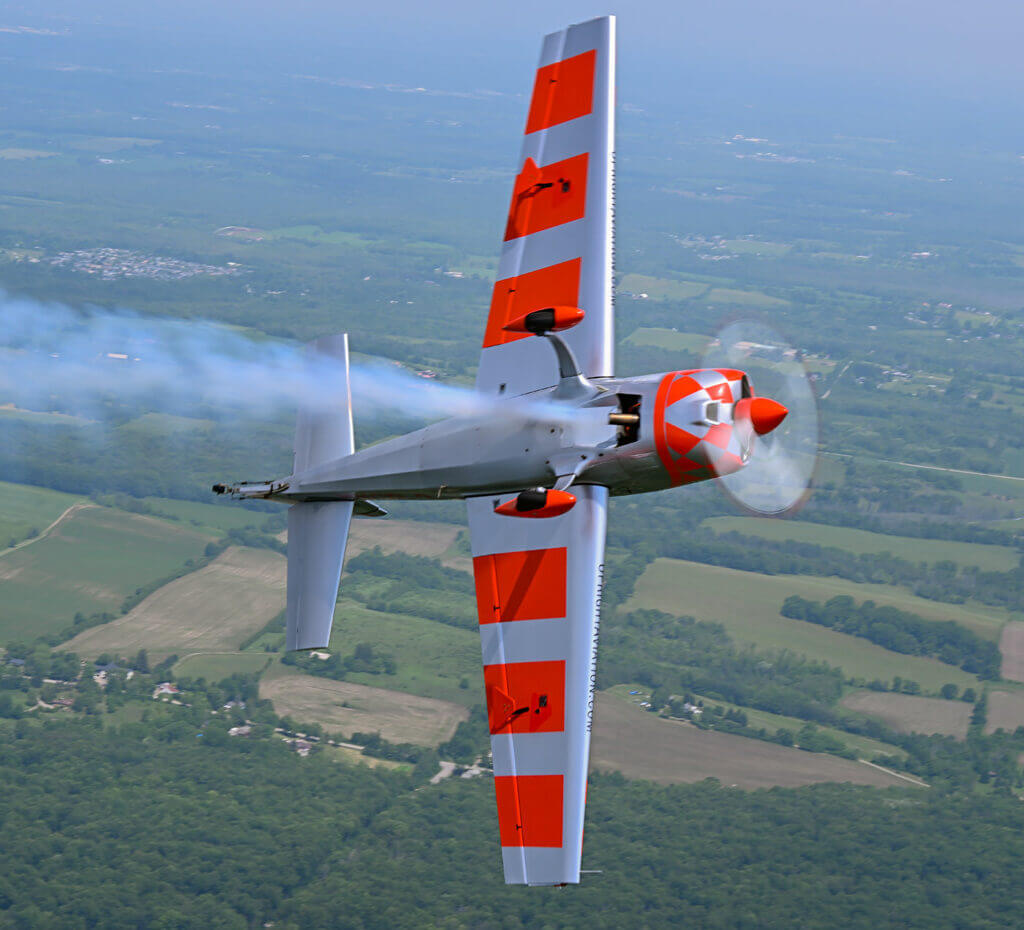
“We’re starting to see a lot more Americans now, too,” said Armstrong. “In the group of U.S. states right below us, there aren’t many aerobatics options. Pilots either have to travel to Florida or California, so instead they call us.”
For the Thrill of it
For those who aren’t pilots, but perhaps aviation enthusiasts or adrenaline seekers, Upright Aviation has the perfect offering: thrill rides — in none other than the Extra 300L.
Loops, rolls, hammerheads, and tumbles are a few of the classic aerobatic maneuvers performed during a thrill ride. Upright Aviation calls this its “UFLY Package,” as participants are given the opportunity to get their hands on the controls of the Extra if they choose — whether they’re a seasoned pilot or they’ve never seen a cockpit up close before.
“People with zero flying experience get to come fly with an airshow or competition pilot and be able to do loops and rolls on their own,” shared Armstrong. “It’s pretty awesome to be able to give people a bucket-list experience.”
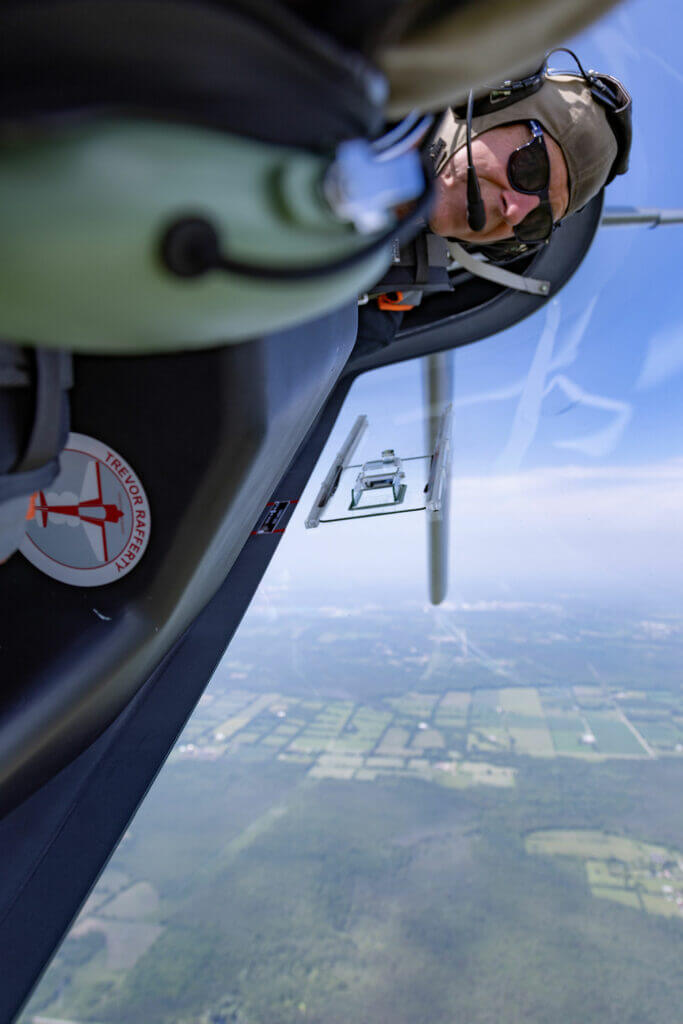
Each thrill ride begins with a mandatory safety briefing before participants get strapped into the Extra and hit the skies for the flight of a lifetime. Thrill rides last between 30 to 40 minutes before returning to Upright Aviation’s CZBA hangar. Of course, there are many opportunities for photos. Upright Aviation has also decked out its aircraft with camera mounts to capture every minute of every flight on video.
“Contrary to what some people may believe, pilots are not out to make you sick,” the company says on its website. “Our pilots are excited to share their love of aviation by offering a memorable, thrilling experience.”
Room to Grow
Though it has already grown significantly since opening its doors in 2019, Upright Aviation Academy has no plans of slowing down. In the near future, the flight school hopes to bolster its safety courses with the addition of flight simulators at its new facility at CZBA.
Armstrong said the sims would be useful for “transfer of knowledge from the aircraft into the simulator, and vice versa” — particularly with its UPRT course. “We made sure to leave space in our new facility to add our own simulators.”
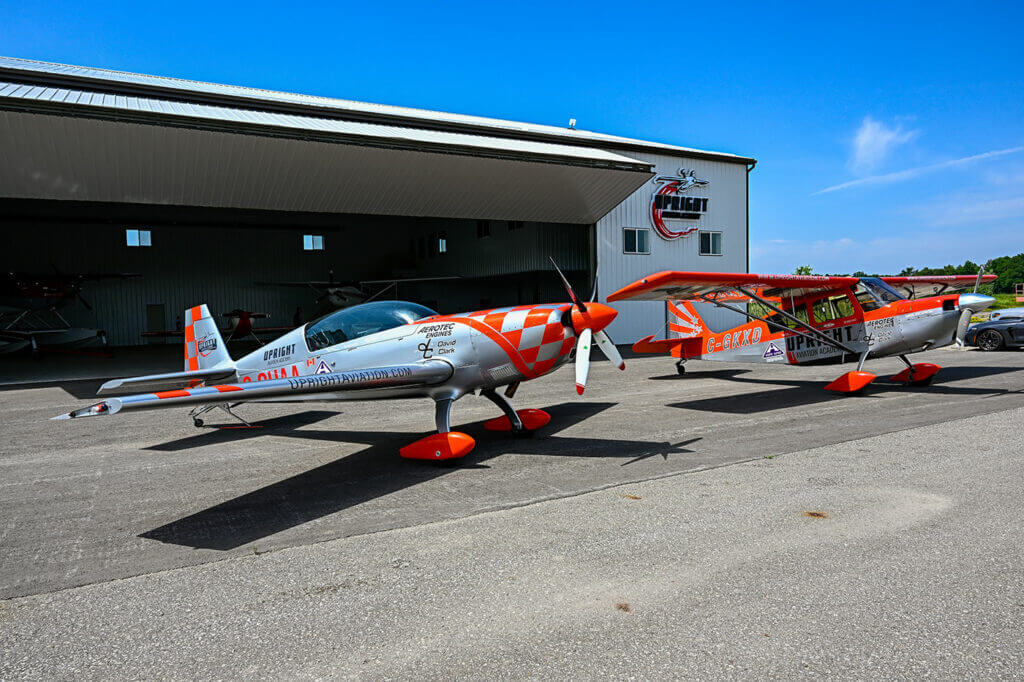
Another project that Upright Aviation has on the go is working with the world’s largest insurance provider to allow turbine operators to reduce their annual training costs by taking the UPRT course bi-annually — rather than completing Transport Canada-required annual simulator training — and potentially reduce their premiums, too. Upright Aviation also hopes to offer similar benefits to GA pilots who train and take courses with the flight school.
“We had the largest insurance provider come out to the airport, check out our facility, and test our upset recovery program with us,” shared Armstrong. “So we’ve been working with them and the brokers . . . that’s our next big project. It’d be huge for us.”
In addition to those plans, Armstrong said the flight school is “always looking at other aircraft,” and remains open to building upon its current two-ship fleet. But no matter what the future holds, Upright Aviation Academy intends to stay true to its original mission to enhance pilot training and safety — and hopefully play a role in reducing the number of fatal loss-of-control-in-flight accidents in the GA industry.
“It’s really rewarding when pilots come in and do UPRT, tailwheel, or aerobatic training with us, and you just see their skill and their overall knowledge of safety practices increase — and you know that you had an effect on that,” Armstrong told Skies.
“Whether they’re in a pilot career or they enjoy flying as a hobby, it’s great to be able to put our footprint on their training from a safety perspective; that’s the most rewarding part for me.”
